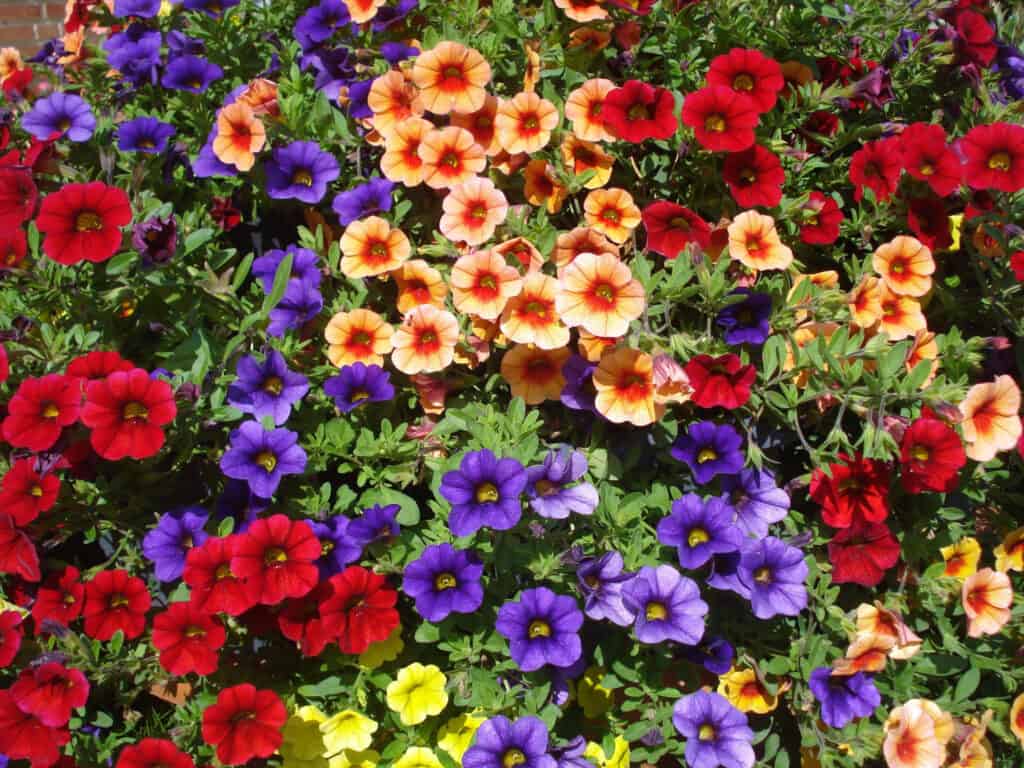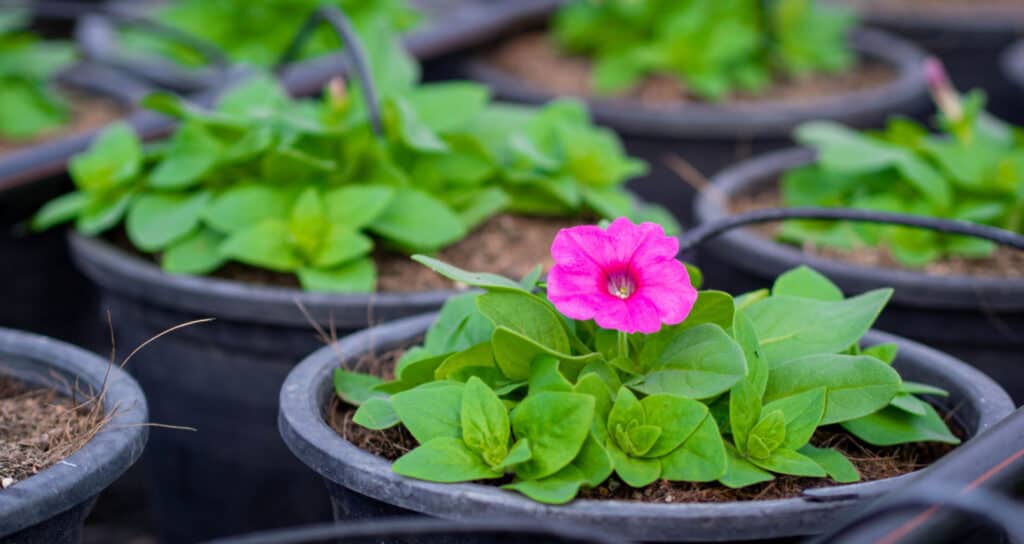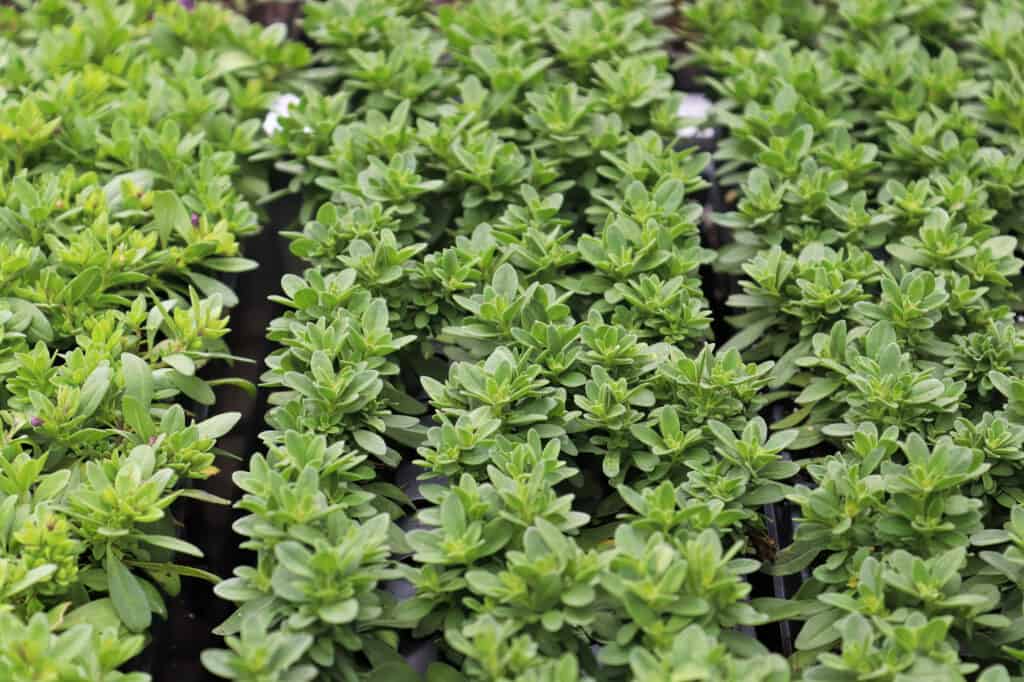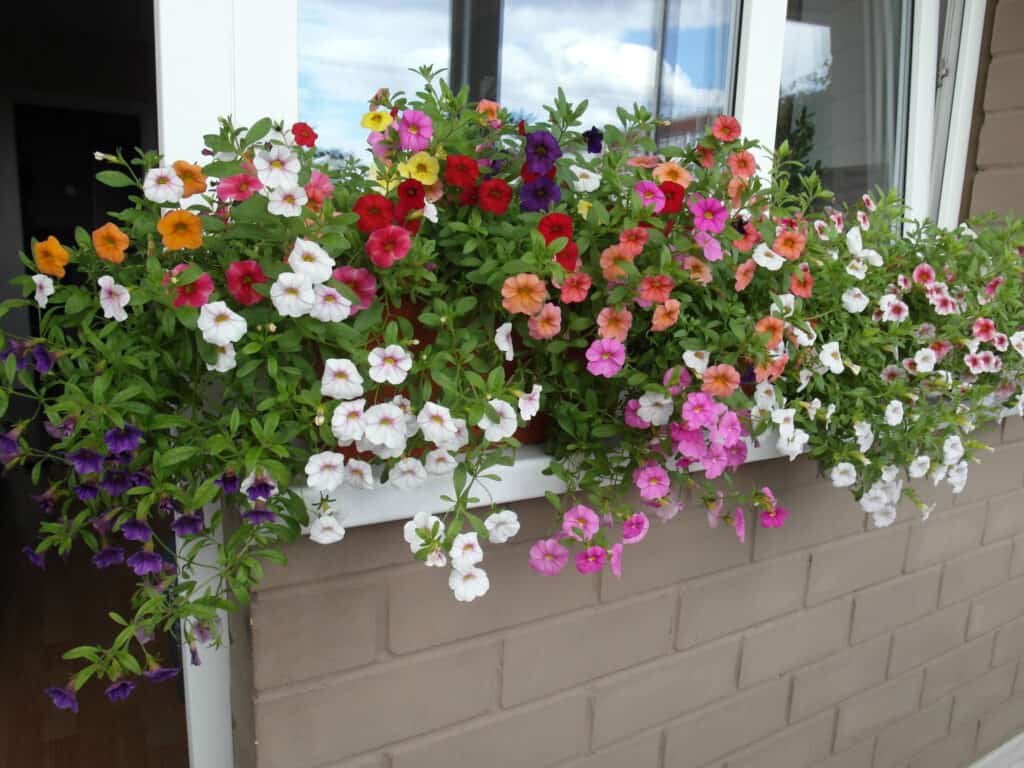There aren’t very many calibrachoa seeds available for the home gardener, given the trademark and patented nature of this plant. Also known as Million Bells, calibrachoa flowers are closely related to petunias. These blooms are perfect for containers, displaying hundreds of annual flowers, and are typically purchased as a start from your local garden center. But can you grow calibrachoa from seed?
Only one variety of calibrachoa plant is available in seed form, all other varieties being trademarked and sold exclusively as starts or established plants. However, calibrachoa flowers are easy to grow if you start them indoors in late winter, with an outdoor hardening process and planting in your garden sometime in spring. Plus, you can harvest your own calibrachoa seeds for next year too!
If you don’t want to purchase a calibrachoa plant from your local nursery this year, here’s how to grow calibrachoa from seed, step by step.

adina munteanu/Shutterstock.com
Calibrachoa Seeds: Everything You Need to Know

kheartmanee thongyot/Shutterstock.com
Did you know that plants can be trademarked? Calibrachoa plants are technically native to South America, but all calibrachoa flowers found in the United States are typically known as Million Bells® or Super Bells®. You’ve likely seen these calibrachoa varieties in your local garden centers or nurseries, and this was the only way to plant calibrachoa for some time. No seeds were available, and you can’t purchase Million Bells® or Super Bells® in seed form.
Now, there’s a specific variety of calibrachoa for the home gardener, known as “Kabloom”. They are reportedly a fantastic variety of calibrachoa to grow, with plenty of colors to choose from so that you can plant your garden just how you like! So, how can you grow your own calibrachoa from seed and save some money? Let’s talk about that now.
Germinating and Growing Calibrachoa Flowers from Seed

Amelia Martin/Shutterstock.com
From start to finish, here’s how to best grow your calibrachoa seeds:
- Start your seeds inside, two months before your final frost date. Your calibrachoa seeds need time to germinate in a protected environment before spring arrives. Start them indoors, no sooner than two months before your final frost date. Calibrachoa can be a fairly short-lived plant, so you don’t want to start them too soon either!
- Use more seeds than you originally planned. Calibrachoa plants have a fairly low germination rate, which means that not all of the seeds you get are likely viable. You may want to use all available seeds you have, just in case!
- Start your seeds in a flat of potting soil. Since calibrachoa looks best in large bunches of blooms, sow them in a large flat. The soil should be a seedling blend or a fairly basic potting soil.
- Scatter your seeds atop the soil, but do not bury them. Calibrachoa requires light to germinate, so be careful not to bury your seeds beneath your potting soil mixture. Simply scatter the small seeds atop the dirt and leave them be!
After Planting Calibrachoa Seeds
- Mist your seeds carefully. Given the fact that your seeds are resting atop dirt, gently mist your calibrachoa so that it is watered, but no seeds are washed away.
- Keep your seeds warm. Thriving in the summertime, calibrachoa prefers a temperature of 70 degrees Fahrenheit. Make sure to use a heating pad or heat lamp for the best results.
- Make sure your seeds have sunlight while they germinate. Use a grow light or set your seeds on a sunny windowsill to encourage growth. Keep your soil consistently moist during this time as well.
- Once your seedlings have grown and frost conditions have cleared, harden your starts outdoors. Hardening is an important process for most indoor-grown plants, as it allows them to acclimate without rushing them. Take your calibrachoa starts outside during the daytime for a few days, bringing them in at night. You can start leaving them out overnight after this point, and your new flowers should be ready for planting after a week’s time of hardening!
Harvesting Calibrachoa Seeds

StageMaster/Shutterstock.com
Given the fact that calibrachoa plants are expensive when purchased as starts from your local hardware store, you may want to save seeds from your existing flowers. Here’s how to accomplish this, with a few things to keep in mind:
- Some calibrachoa plants may never produce viable seeds. Given the fact that calibrachoa is a hybrid plant, they may or may not produce seeds that grow. At the very least, calibrachoa never produces plants that match its parent plant, so keep this in mind and expect a truly surprising growing experience!
- When properly pollinated, calibrachoa flowers produce pods. Watch the seed pods carefully as time passes, and harvest them as they turn brown. You don’t want your calibrachoa pods to burst open, as this will lead to a loss of seeds. Gently clip them from your plant and bring them indoors.
- Open the seed pods and keep the seeds inside for next year. While they may be small, calibrachoa seeds are easily harvested from their protective pods. Simply crack open the pods and pour the seeds into an envelope for future use!
Up Next
- Cosmos Seeds: Easily Grow This Annual Flower!
- Hydrangea Seeds: Experiment With This Popular Shrub!
- Lupine Seeds: Grow This Beautiful Wildflower in Your Own Garden
The post Calibrachoa Seeds: Grow Your Own Beautiful Blooms! appeared first on AZ Animals.
from Animal News, Facts, Rankings, and More! - AZ Animals https://ift.tt/fI1aoUs